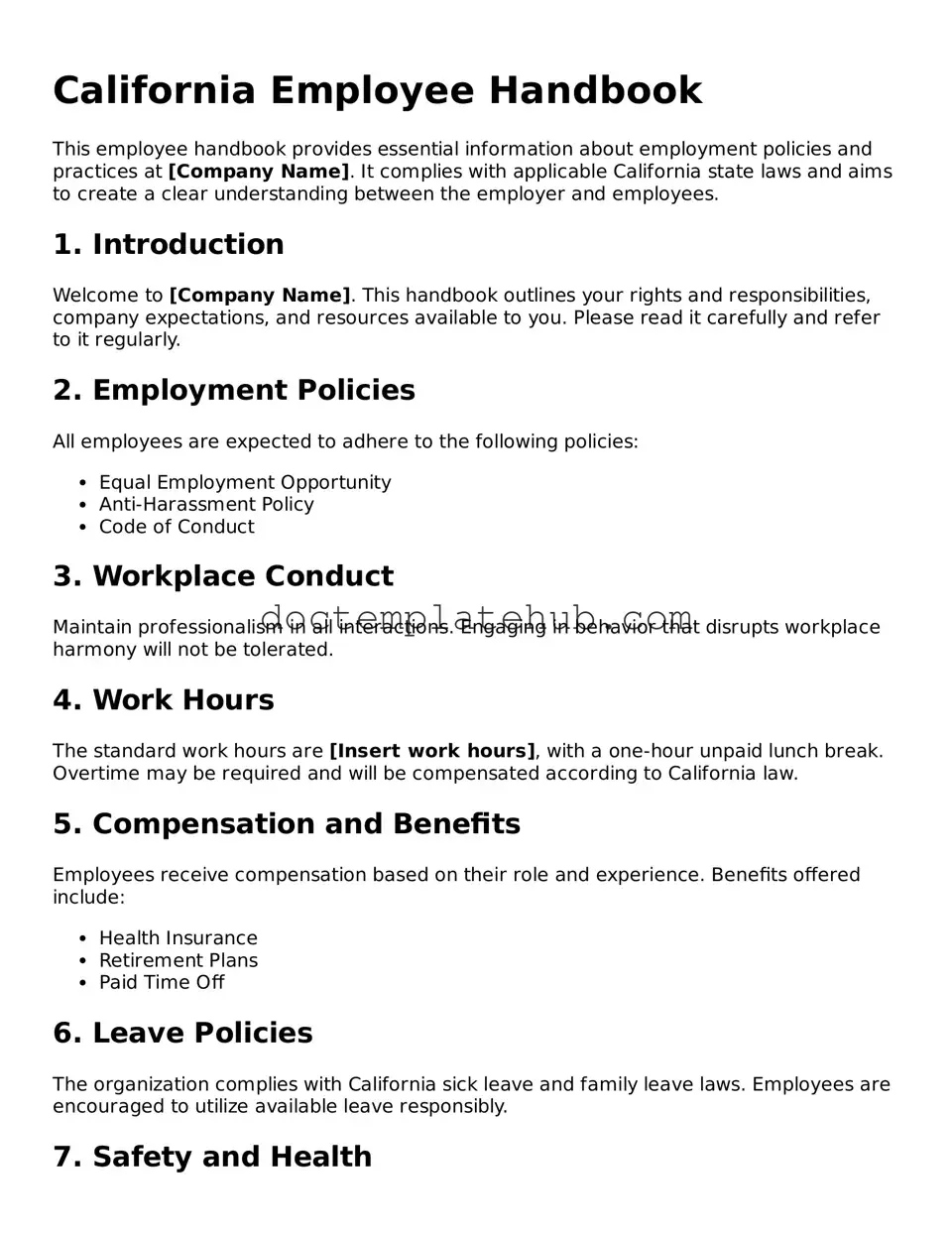What is a California Employee Handbook?
A California Employee Handbook is a comprehensive document that outlines an employer's policies, procedures, and expectations for employees. It serves as a guide for both employees and management, ensuring everyone understands their rights and responsibilities within the workplace. This handbook can cover topics such as workplace conduct, benefits, and safety protocols.
Why is an Employee Handbook important?
An Employee Handbook is essential for several reasons. It helps to establish clear communication between employers and employees, reducing misunderstandings and potential conflicts. Additionally, it can protect the company legally by demonstrating that policies are consistently applied. A well-crafted handbook also helps in onboarding new employees, providing them with vital information about the company culture and operational procedures.
What should be included in a California Employee Handbook?
Key components of a California Employee Handbook typically include an introduction to the company, equal employment opportunity policies, anti-discrimination and harassment policies, attendance and leave policies, employee benefits, workplace safety rules, and disciplinary procedures. It's also advisable to include information on employee rights under California law, such as wage and hour regulations.
How often should an Employee Handbook be updated?
It's important to review and update the Employee Handbook regularly, especially when there are changes in state or federal laws. A good practice is to conduct a review at least once a year. Additionally, any significant changes in company policies or procedures should prompt an immediate update to ensure that all information remains current and relevant.
Can an Employee Handbook be a legally binding document?
While an Employee Handbook is not typically considered a legally binding contract, certain policies within it can create enforceable obligations. For example, if the handbook outlines specific disciplinary procedures, failing to follow those procedures could lead to legal issues. Therefore, it's crucial to ensure that the handbook is clear and consistent, and that it includes a disclaimer stating that it does not create a contract.
How can I ensure compliance with California laws in my Employee Handbook?
To ensure compliance with California laws, it's advisable to consult with a legal expert who specializes in employment law. They can help you navigate the complex regulations and ensure that your handbook reflects current laws. Additionally, staying informed about changes in labor laws through resources like the California Department of Fair Employment and Housing can be beneficial.
What should I do if an employee violates a policy in the handbook?
If an employee violates a policy outlined in the handbook, it's important to follow the disciplinary procedures specified within the document. Consistency is key; apply the policies fairly to all employees to avoid claims of discrimination or unfair treatment. Document the violation and any actions taken to address it, as this can be helpful if further action is needed.
Is it necessary to have employees sign the Employee Handbook?
While it is not legally required to have employees sign the Employee Handbook, obtaining a signed acknowledgment can be beneficial. This signature serves as proof that the employee has received and understood the policies outlined in the handbook. It can also reinforce the importance of adhering to the company's rules and expectations.
What should I do if I need to create an Employee Handbook from scratch?
Creating an Employee Handbook from scratch can seem daunting, but breaking it down into manageable steps can help. Start by outlining the key topics you want to cover. Research best practices and legal requirements specific to California. Consider using templates or consulting with a legal expert to ensure compliance. Once drafted, share it with management for feedback before finalizing and distributing it to employees.
